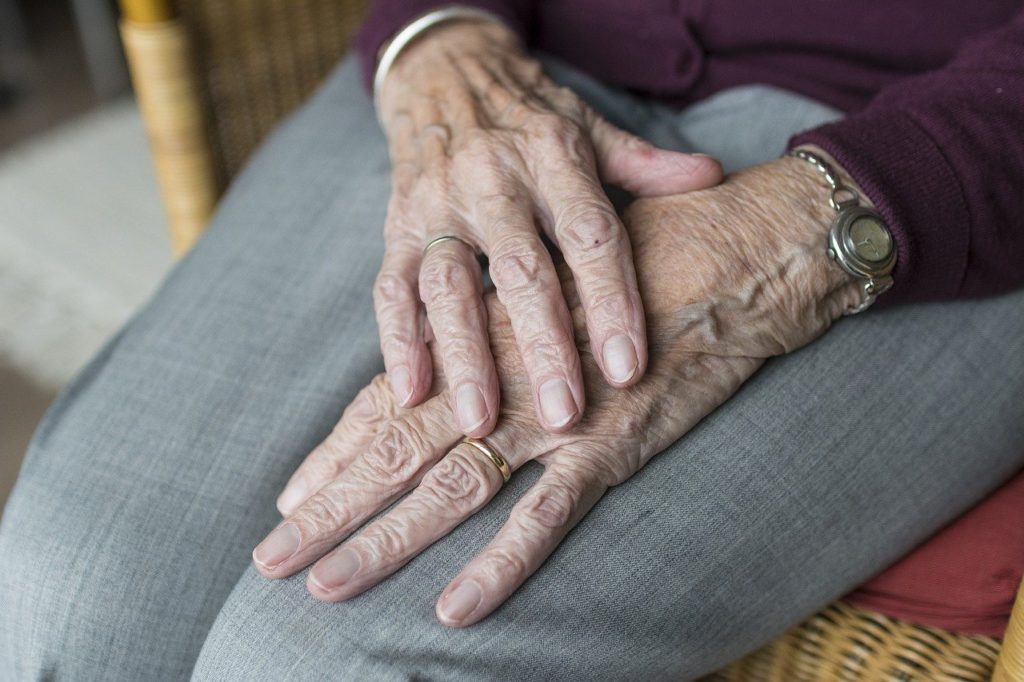Is the Fear of Falling Getting You Down? Let’s Get Back On Your Feet!
Is the fear of falling getting you down? If you answered yes, you’re not alone. Many seniors live in constant fear of falling (or anxiety about falling). In fact, both seniors with and without falls are affected. Among people who have fallen, as many as 80% fear they’ll suffer another fall. Among those who haven’t fallen, about 50% fear they will fall (being exposed to the negative impact of falling from others, such as family members and close friends, can result in one becoming fearful).
Anyone who’s had a fall understands what a terrifying event it can be. Falls typically strike without warning, and make a routine walk in the living room (or outdoors) a scene of helplessness, fear and possible injury. Being apprehensive about falling is not necessarily bad. It can be a healthy, rational response to dealing with a threat. In order to avoid falling, having some fear forces individuals to be more ‘cautions’ with their everyday activities. Yet, fear of falling can also take a more sinister turn, especially if an senior restricts their everyday activities because they think that this strategy will help them avoid a fall. Unfortunately, activity avoidance can result in de-conditioning and loss of muscle strength and balance, which increases the likelihood of a fall.
Consequences
The effects of worrying about a fall can be as disabling as a fall itself (or suffering a physical injury); they include:
- A loss of self-efficacy or confidence in the ability to maintain balance, move about safely and avoid falling. This can result in a tendency to restrict activities. Many seniors will not readily admit to being afraid of falling (due to embarrassment); activity avoidance is an early sign.
- Limiting activities that lead to falling (such as getting in/out of the bathtub, walking to the toilet at night, climbing stairs, etc.).
- Not leaving the house. People may not leave their home because they lack confidence in their ability to maintain balance outdoors. In some instances, poor street conditions (dim lighting and uneven pavements) can make people feel less confident. This can result in social isolation and diminished quality of life.
- Dependence on others for daily activities. Caregivers can become concerned that they’re not doing enough to keep their loved one safe from harm.
- Being depressed at the prospect of losing independence and autonomy.
- Risk of relocating from home to an assisted living or long-term nursing facility.
Who’s at Risk?
A number of health conditions and situations are associated with fear of falling. They include:
- Living alone
- Lack of a caregiver to assist with activities
- Experiencing depression and anxiety
- Visual problems
- Poor balance or difficulty walking
- Multiple falling episodes
- Falling associated with down time (unable to get up by oneself for an hour or more)
- Falling associated with injuries
- Taking sleep or ‘nerve calming’ medications
- Having dementia (often individuals display behavioral outbursts in response, such as agitation or resistance to participate in certain activities).
Fear of falling is greatest in those elders who suffer several falls over a relatively short period of time and/or suffer injurious falls. Fear and mobility restrictions can be imposed by family members as well in an effort to prevent falls (Please Mom, don’t walk alone or you’ll fall!).
Solutions to Beating the Fear of Falling
The good news is that fear of falling is a treatable condition. Steps to take include:
- Ask your doctor if you are at fall risk and why. If yes, ask him or her to suggest ways to decrease your risk of falling. Also have the doctor review all your medications. Do any of them affect your balance and coordination? Be sure to report all falls and/or changes in your balance.
- Get regular exercise to maintain, or regain, balance and strength. Try to include activities such as dancing and Yoga that focus on balance and flexibility.
- Identify activities causing fear (getting in/out of bathtub, toileting at night, going up stairs, etc. ) and consider ways to increase balance confidence (installation of grab bars, use night lights in the bathroom, install handrails on both sides of stairs, etc.).
- Lastly, become more cautious with your daily activities. Although there are plenty of valuable strategies for preventing falls, they can’t stop you from ever falling nor can they guarantee that you won’t lose your balance.
Instead of limiting activities, try to add safety habits to your everyday activities. Here are some suggestions:
- Change positions slowly; sit at edge of bed, sofa, or chair for a few minutes before standing or turning to walk.
- Place daily use items like phone, TV remote, or medications within easy reach.
- Use assistive devices (such as canes or walkers) to maintain balance. As an alternative, rearrange furniture to hold onto when walking; make certain the furniture is stable enough to support your balance.
- Be aware of environmental dangers that could cause a fall (slippery throw rugs, clutter in pathways, stuff on stairs, etc.) and eliminate any hazards that interfere with walking.
- When walking, focus on everything in your path, take your time and avoid sudden movements. Not being careful, not looking where one is going, or being in a hurry is the cause of many falls.
- Don’t stand on unstable stools to reach something on a high shelf; rather keep items at easy reach.
- Turn on lights when entering a dark room, hallway or stairway.
Our fears are like warning signals that protect us from dangers. Sometimes they flash red, telling us not to go any further when they ought to be yellow, telling us to proceed with caution. By understanding the cause of your fear and taking some simple actions, you can turn a red light into a yellow one, or even into a green one.

